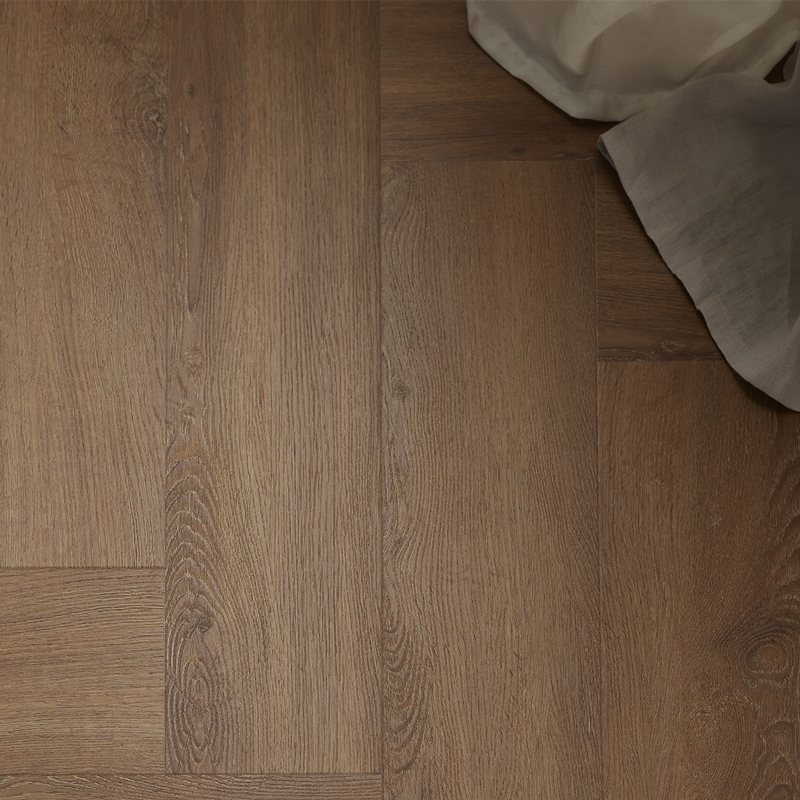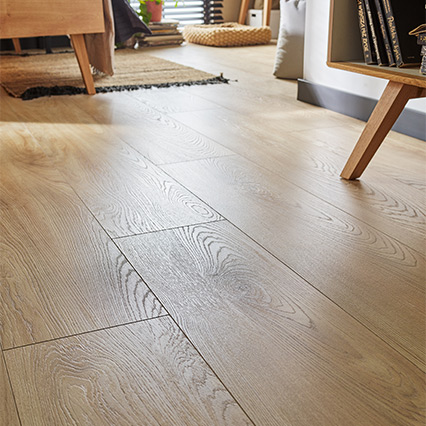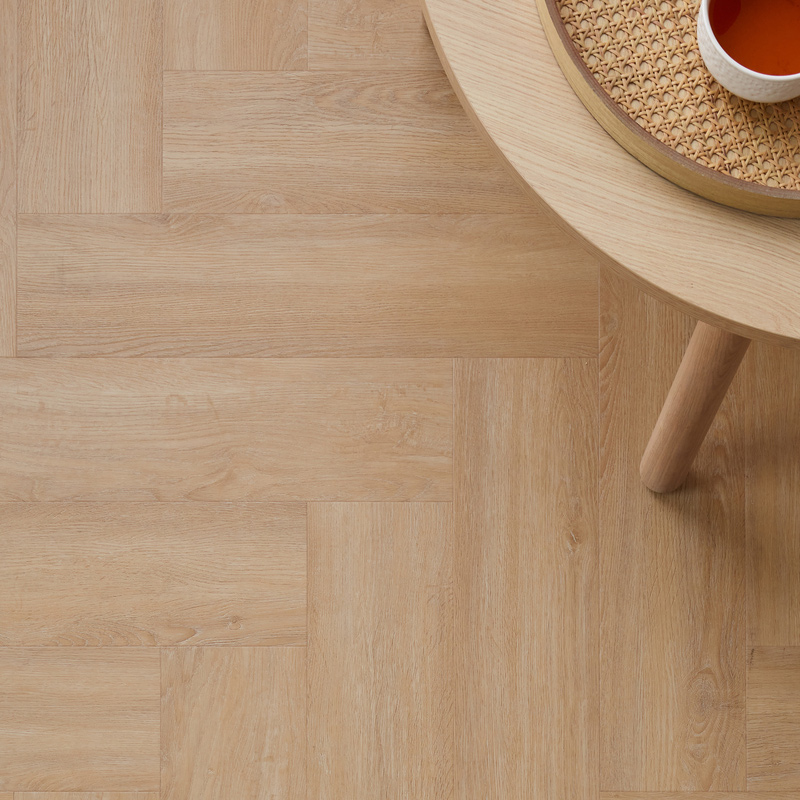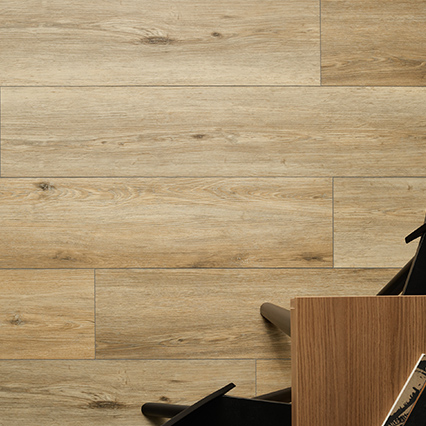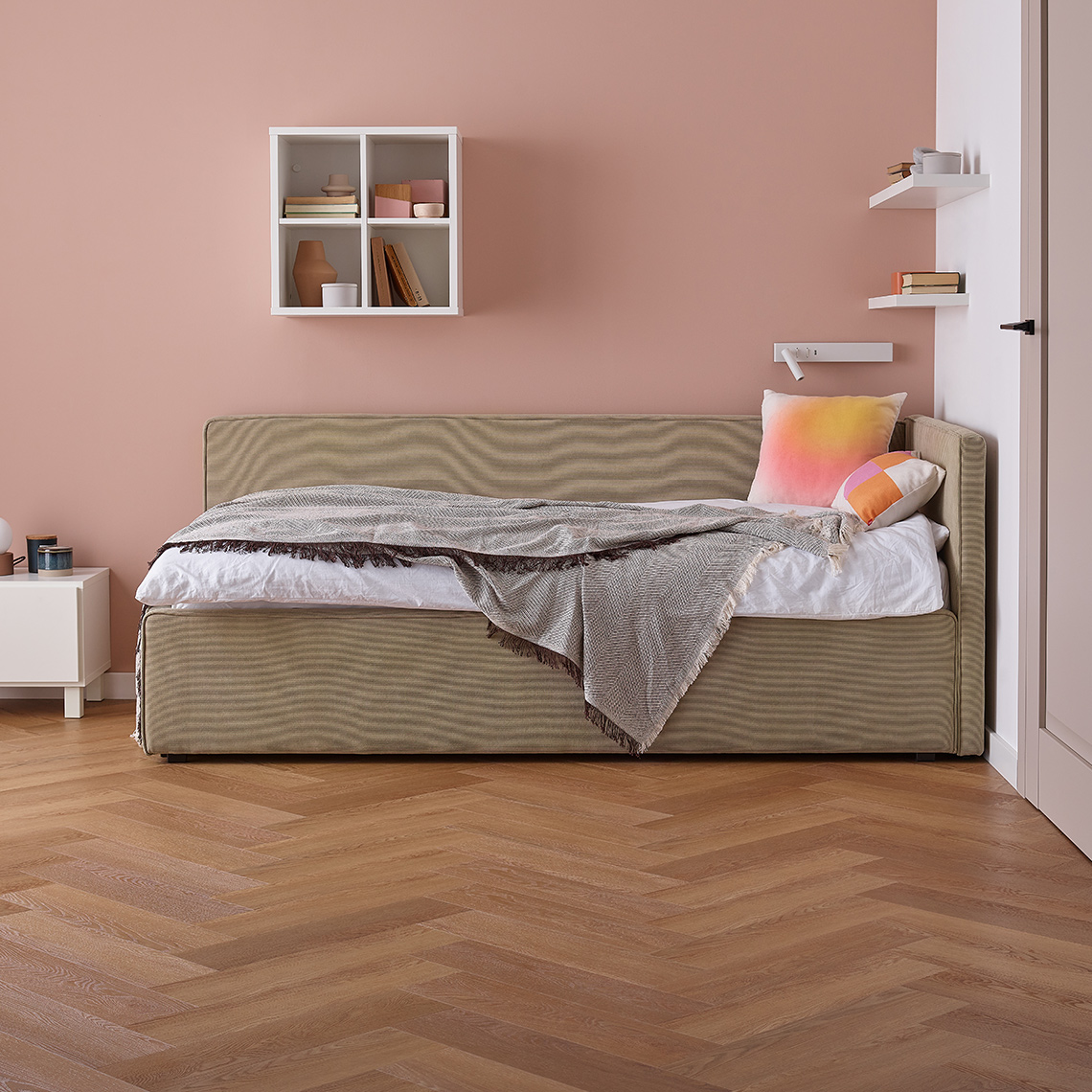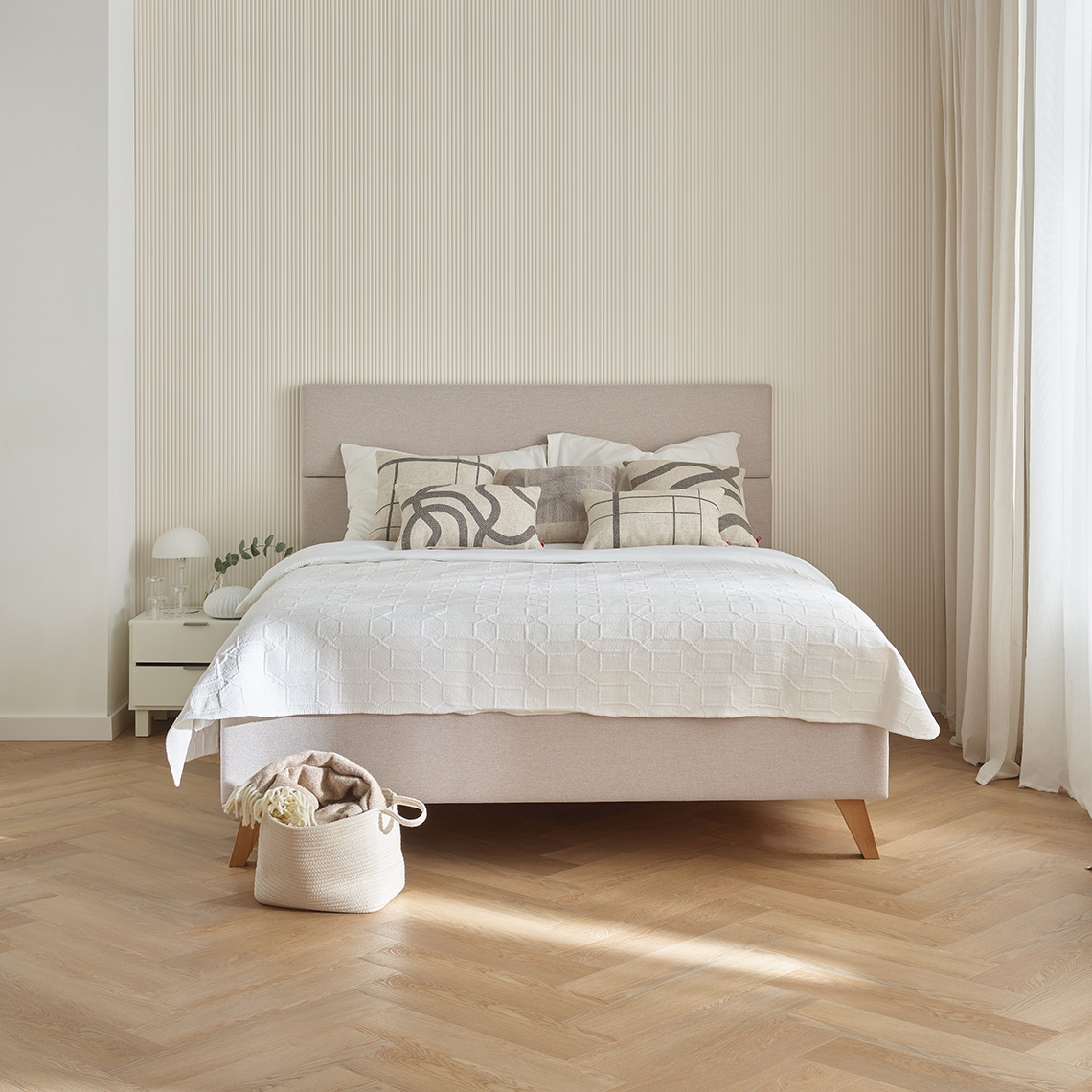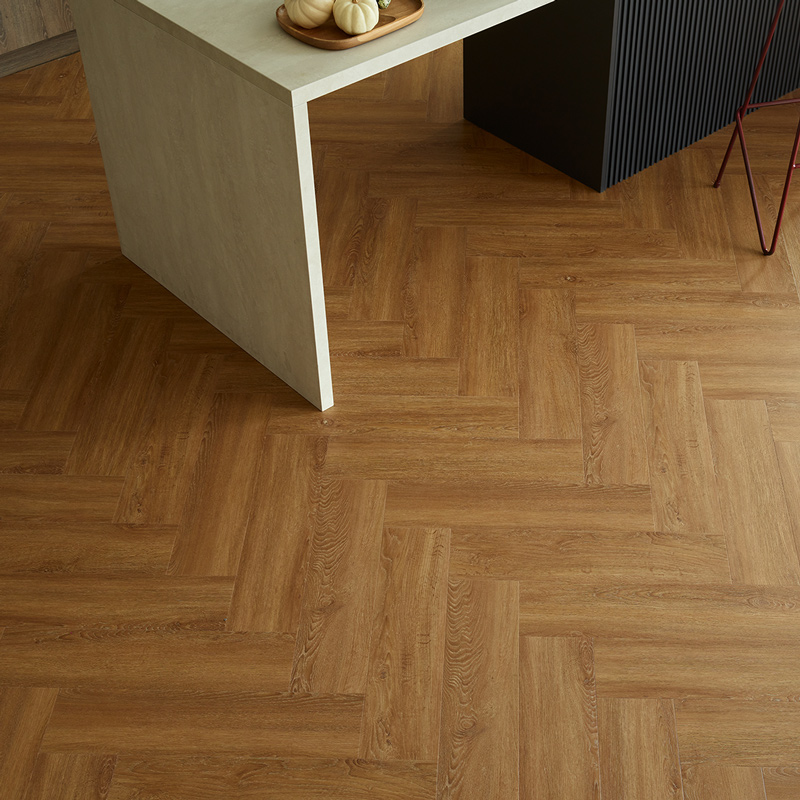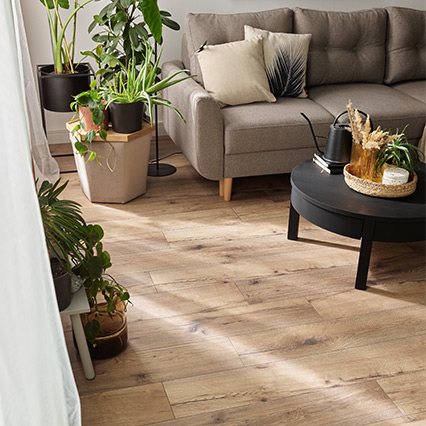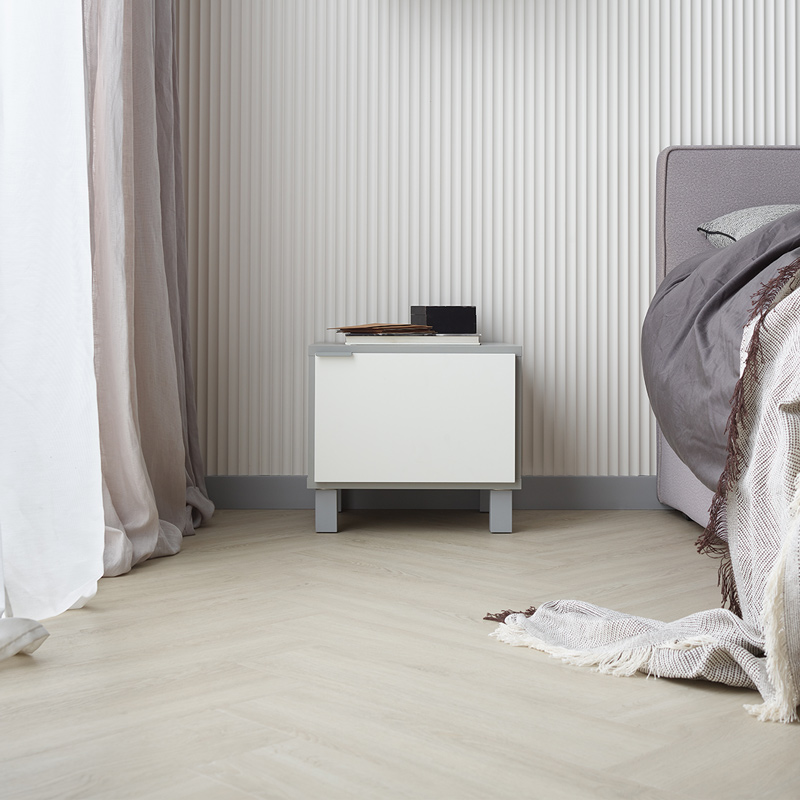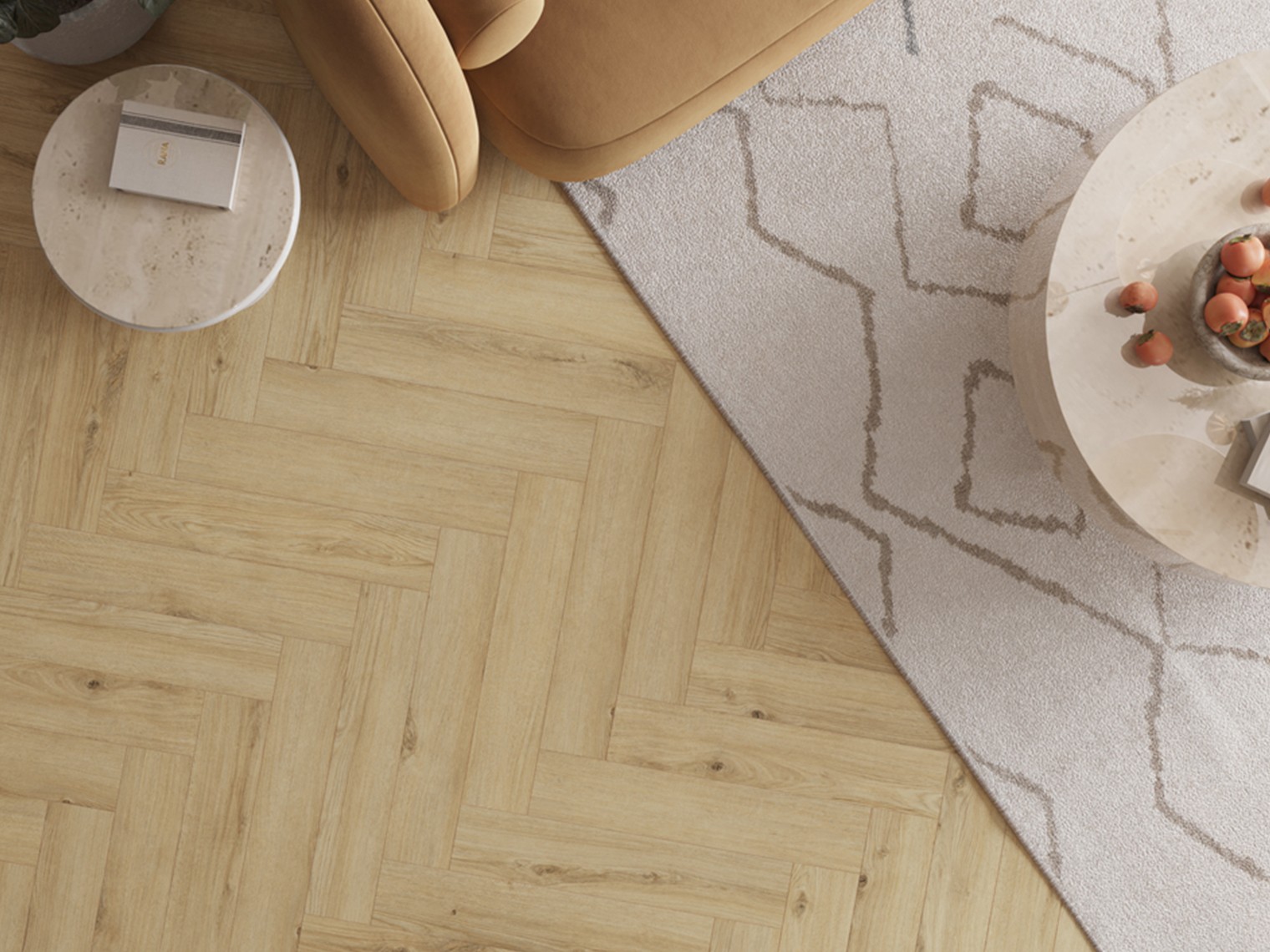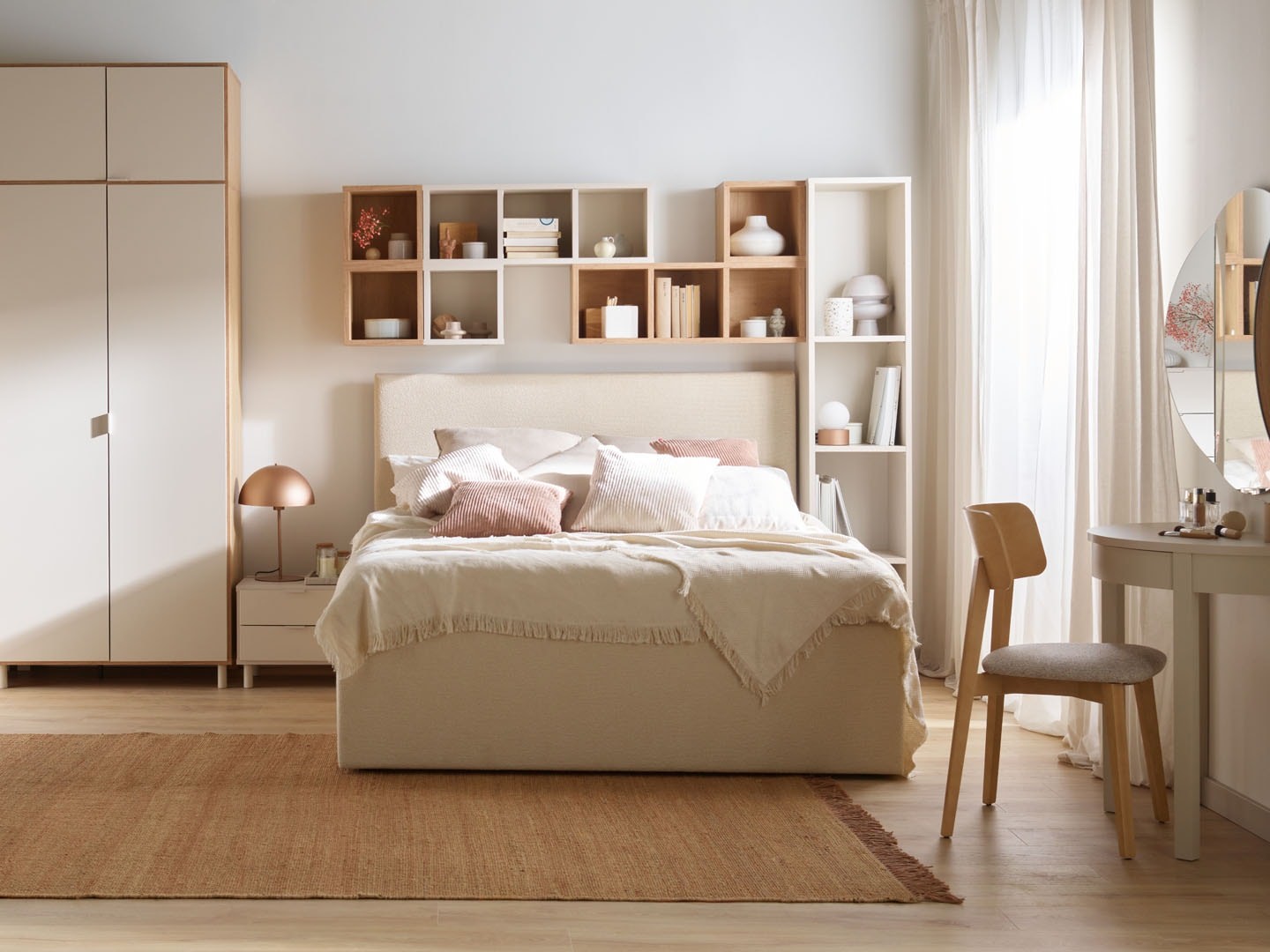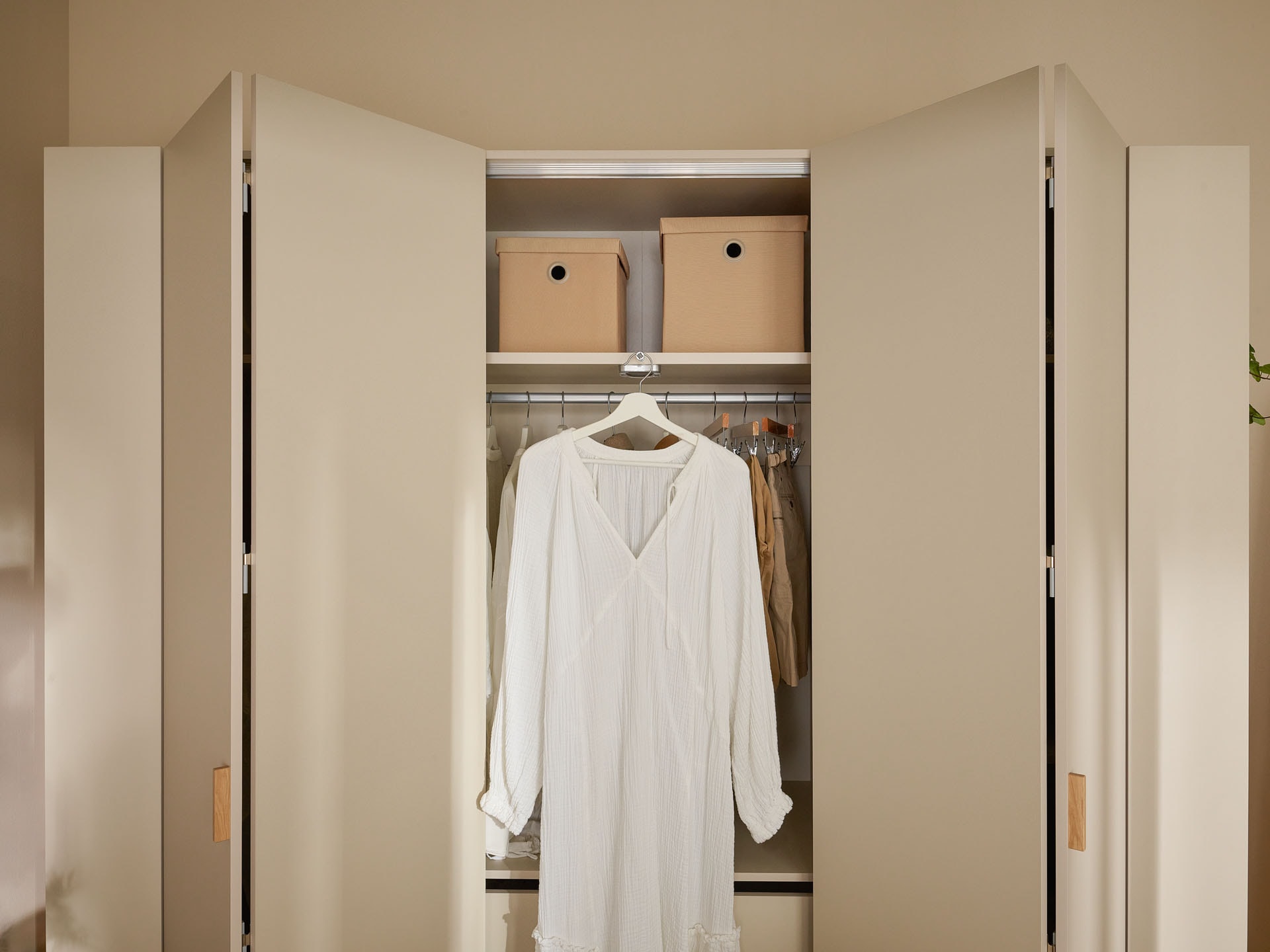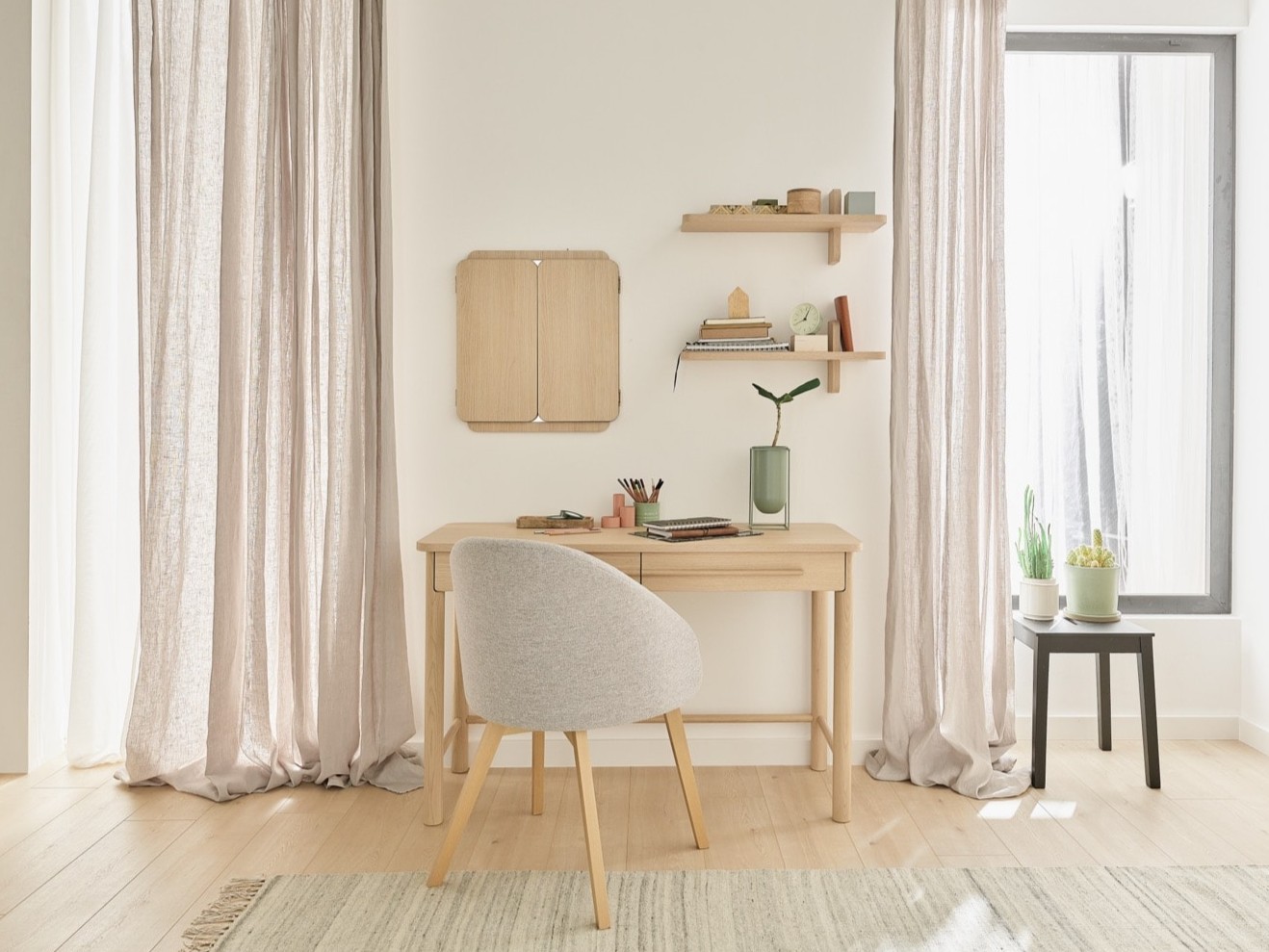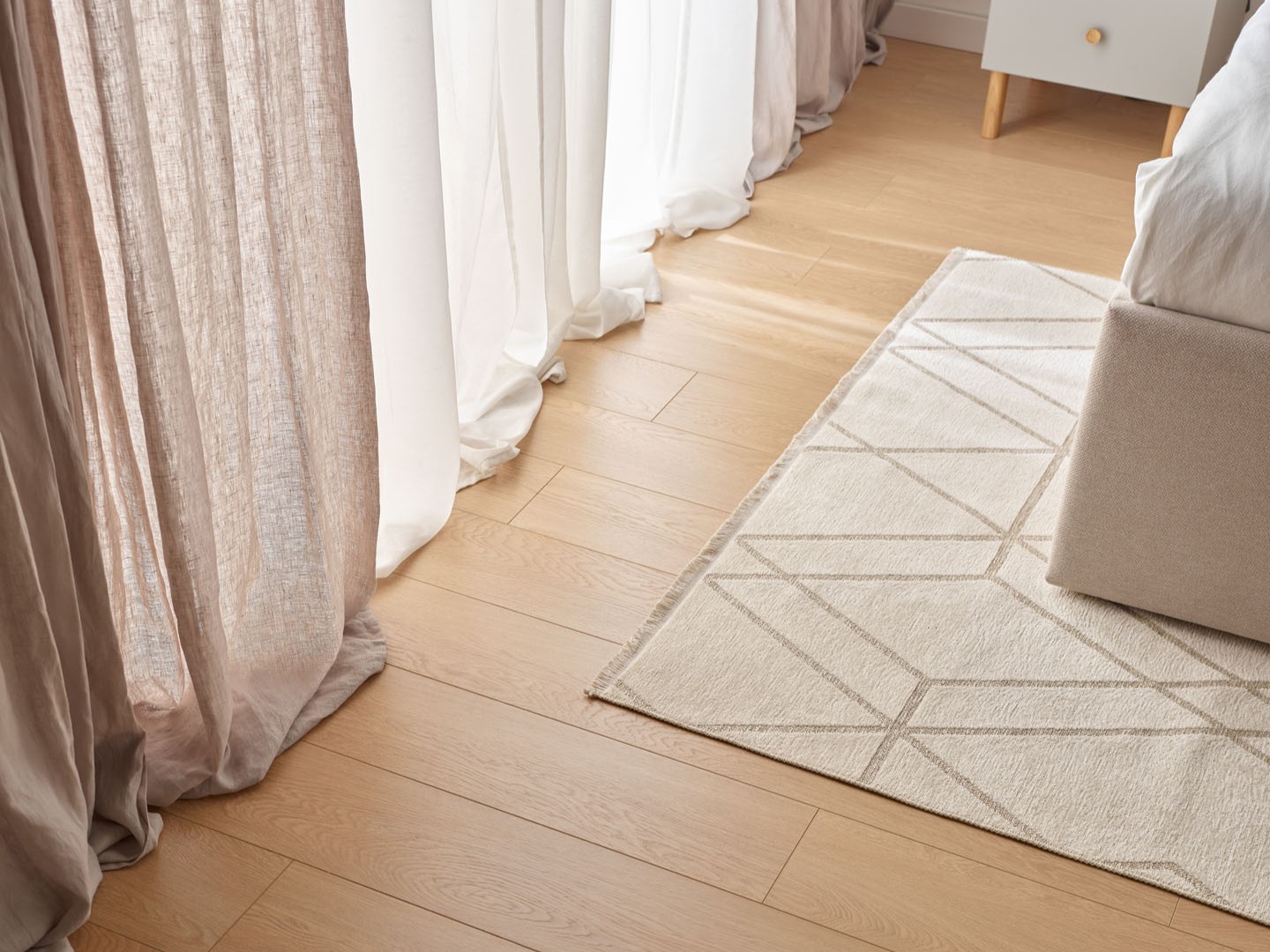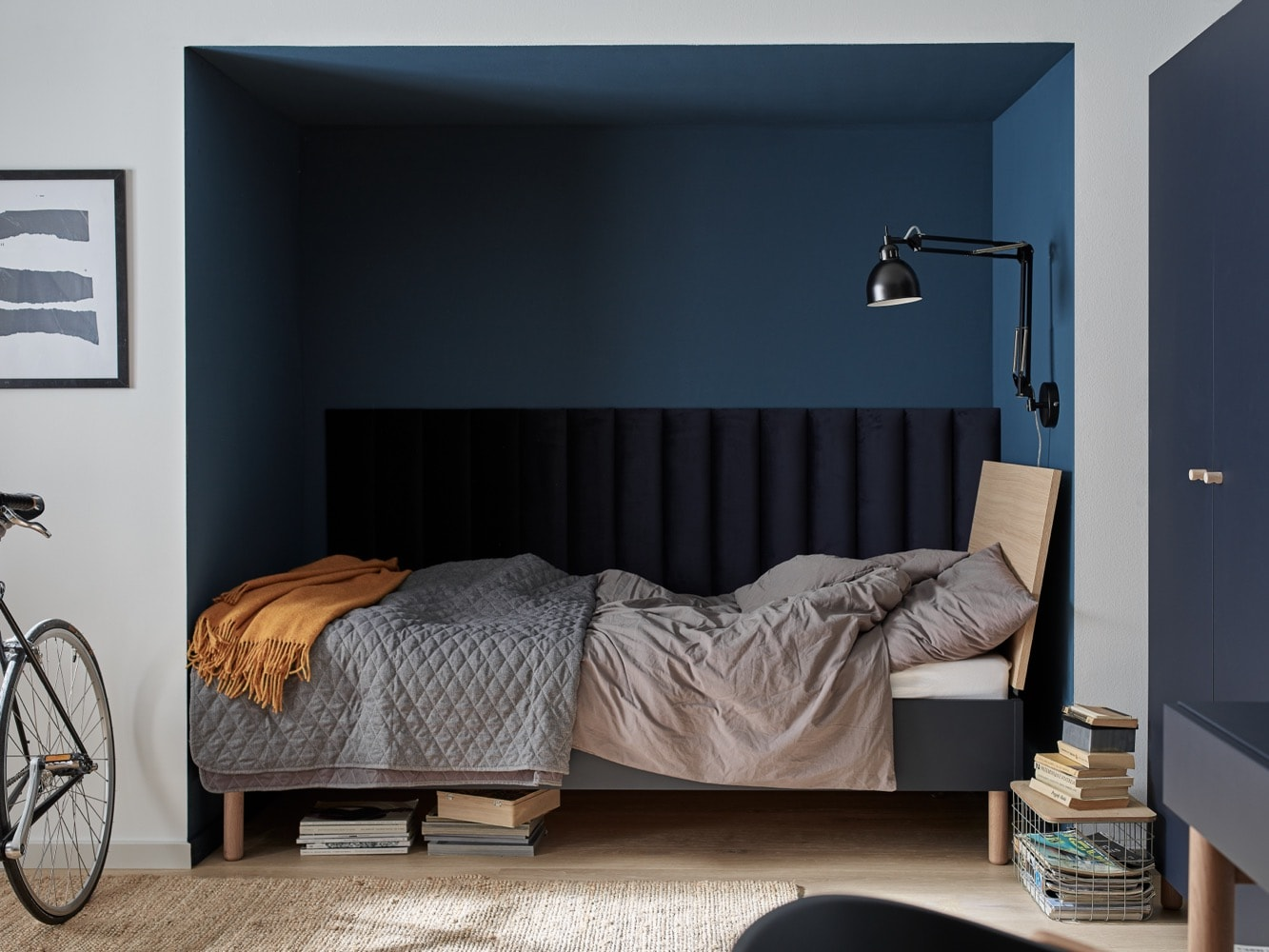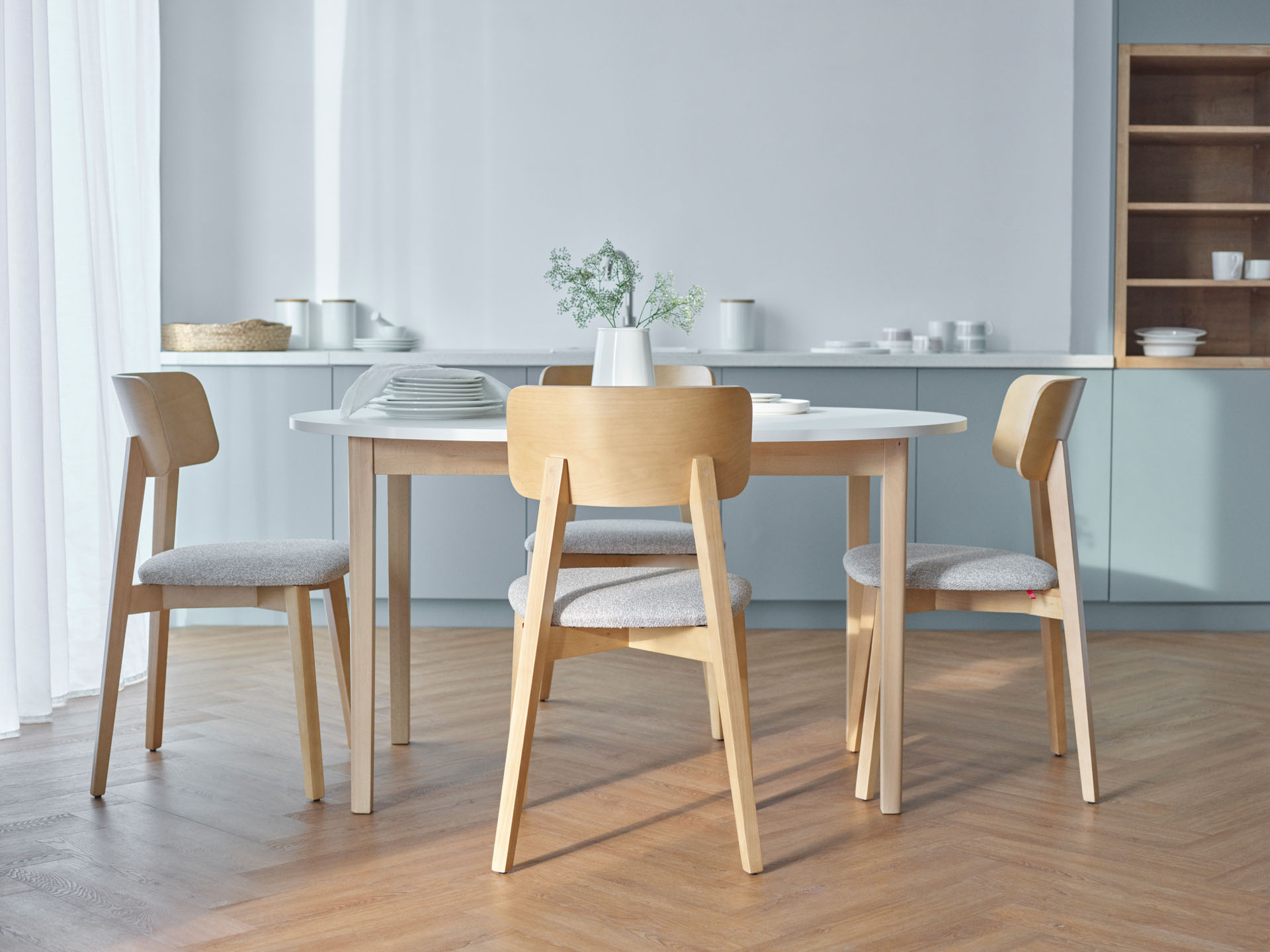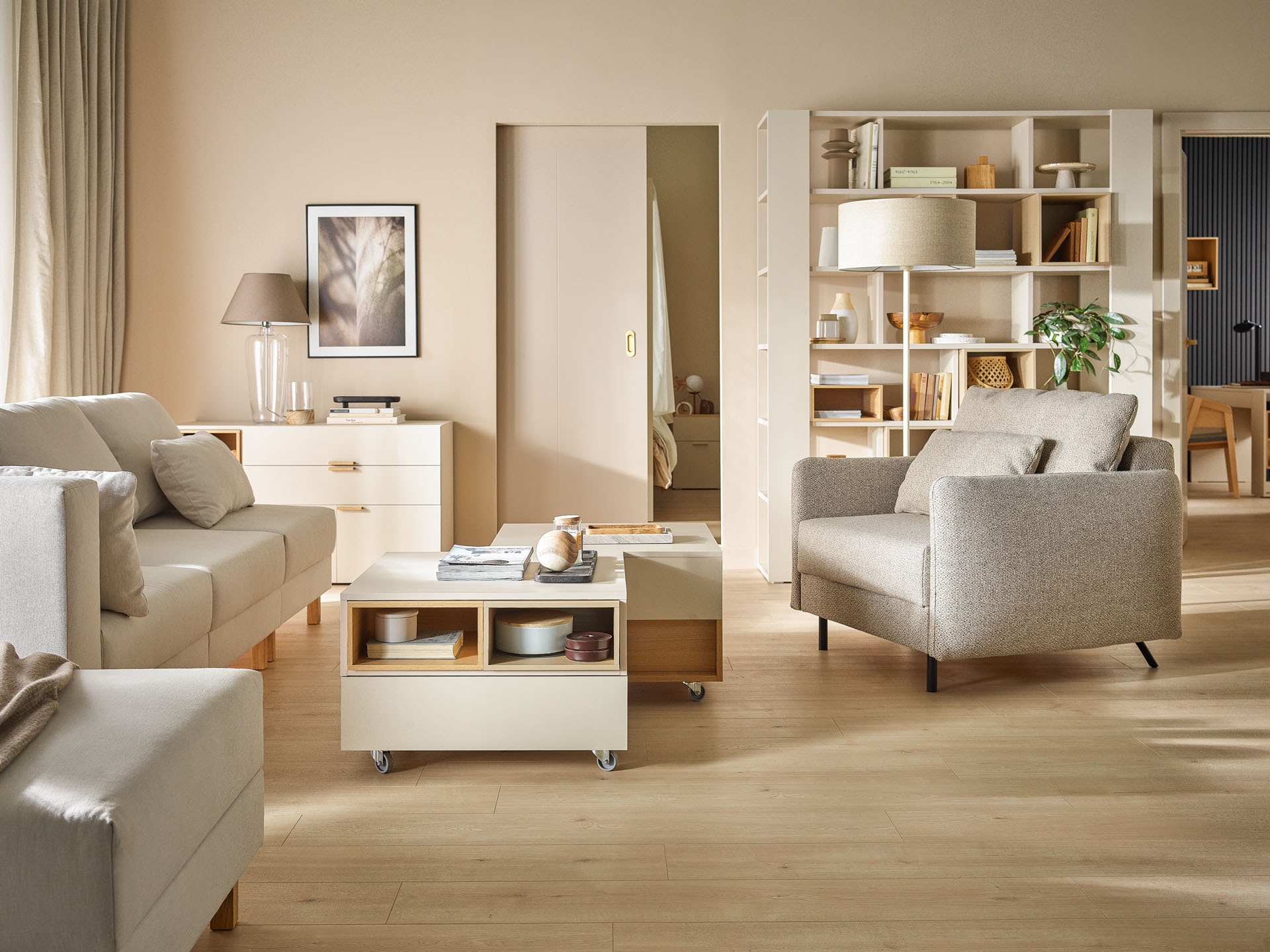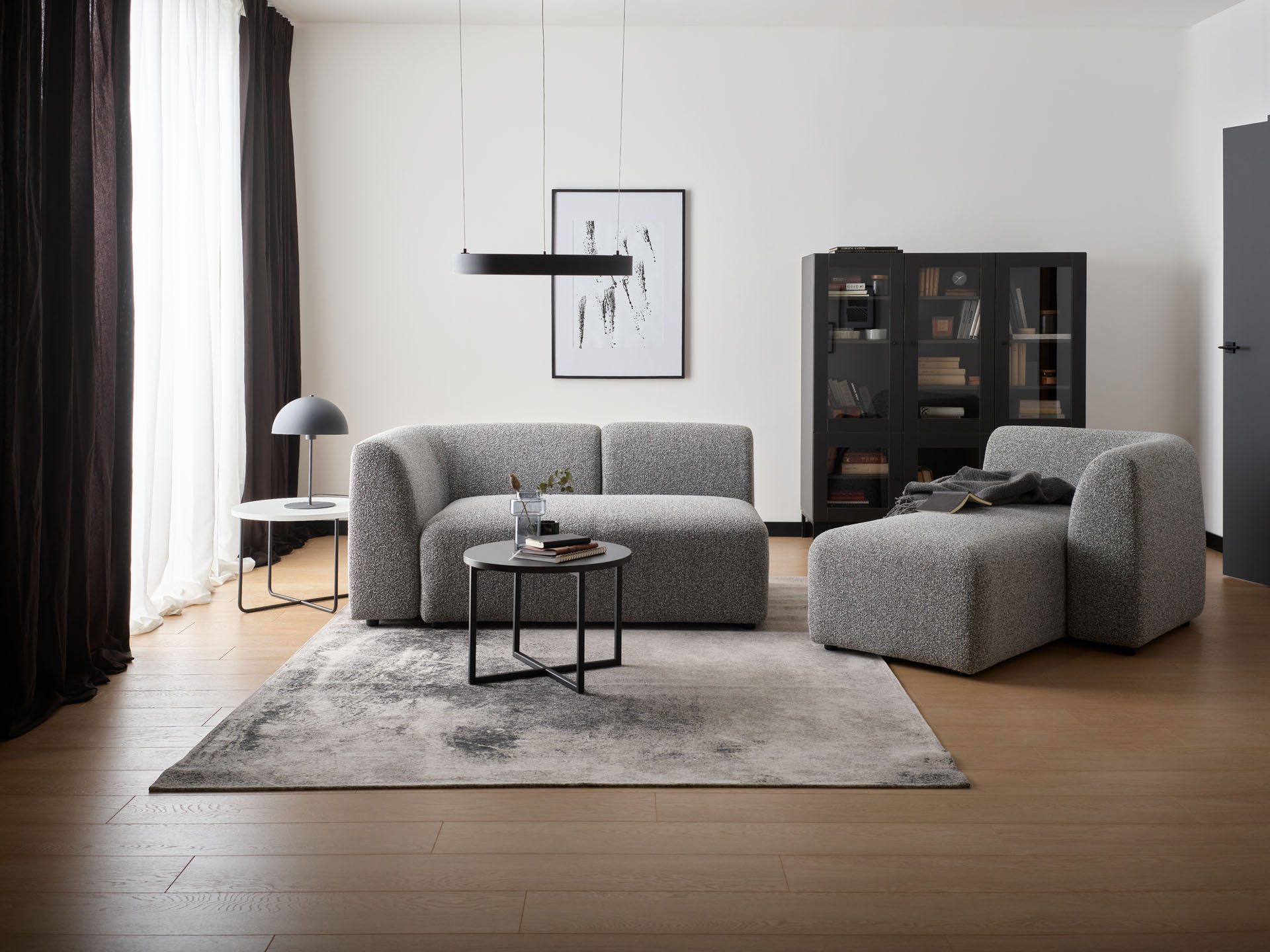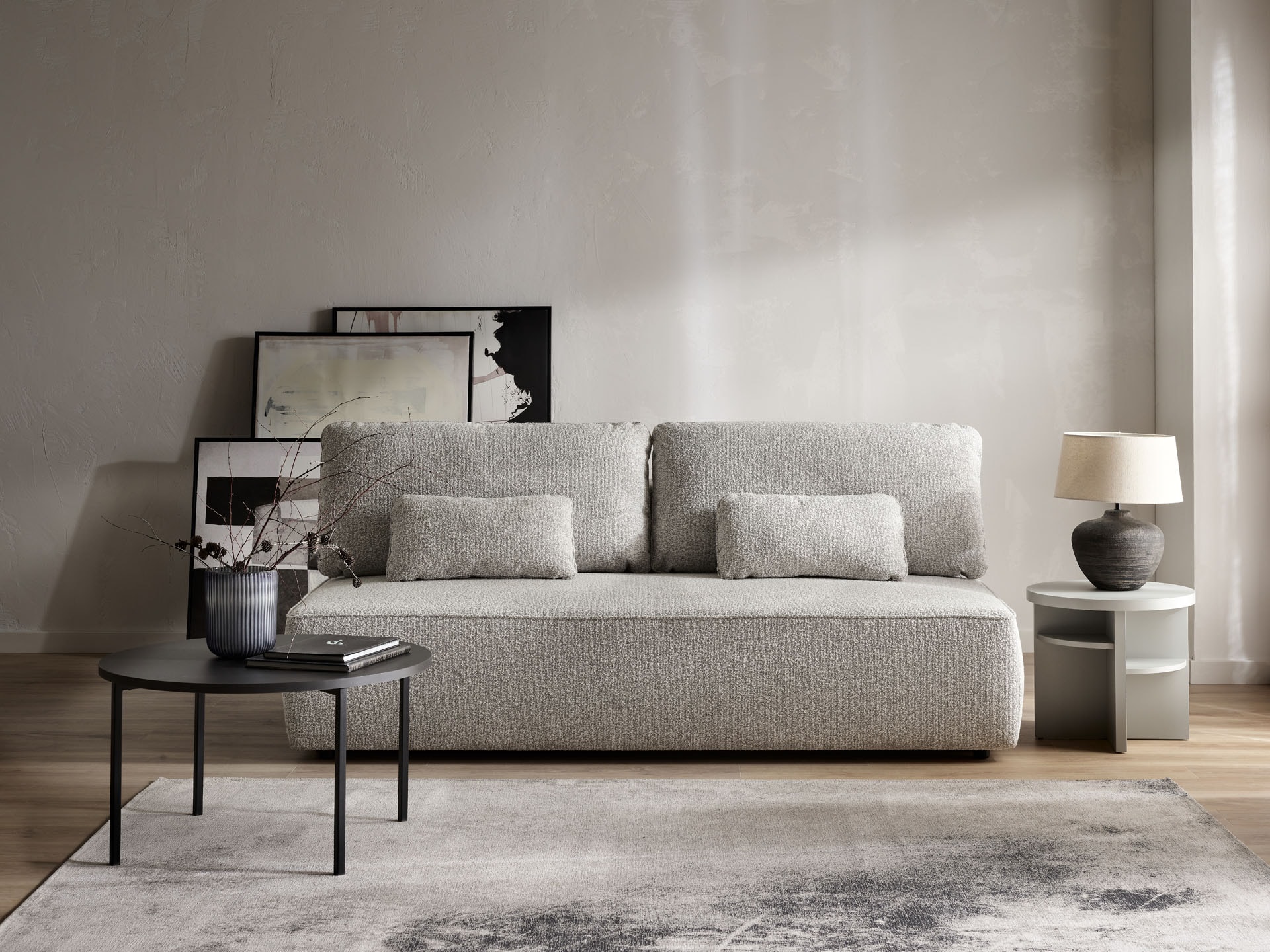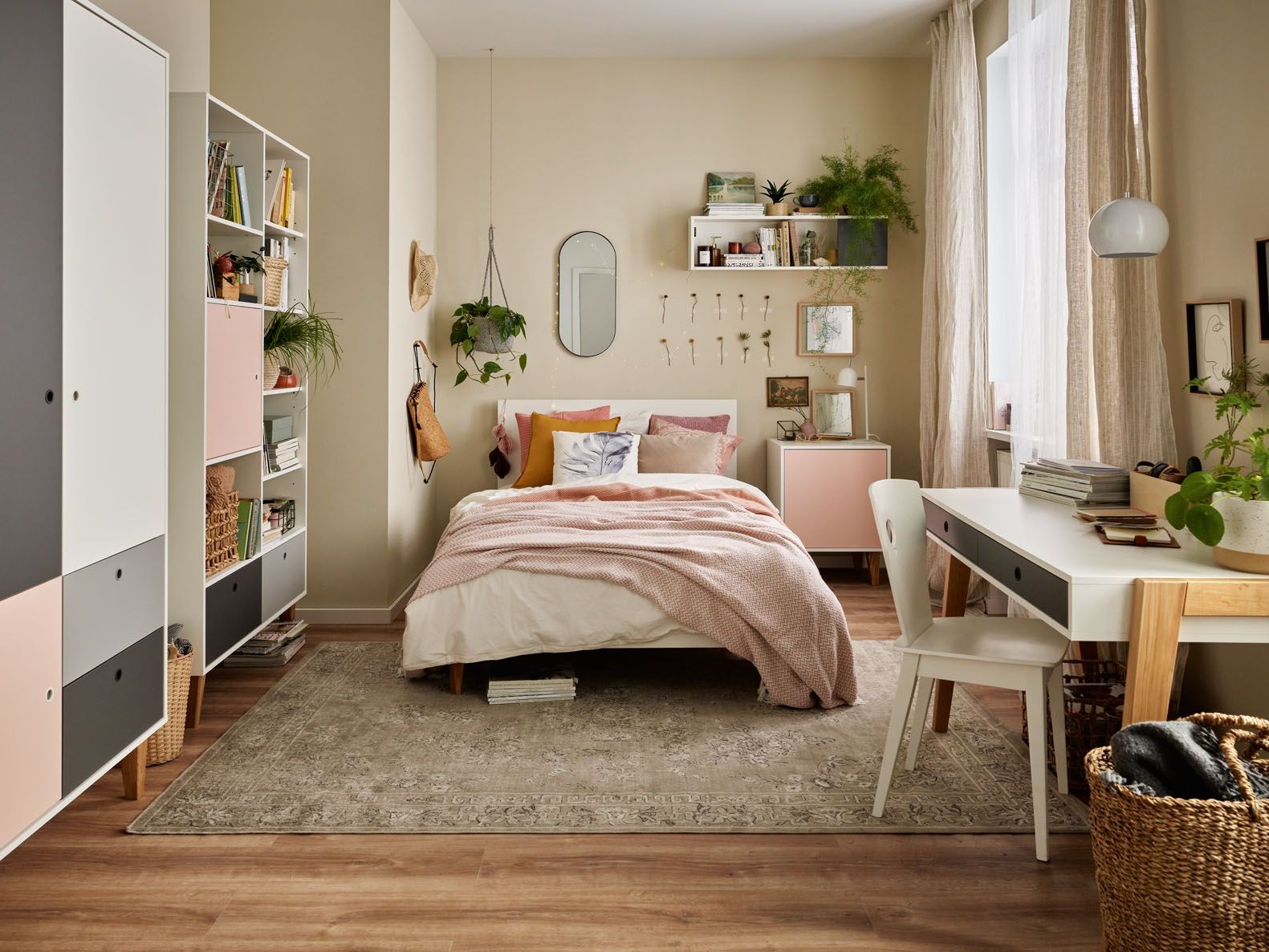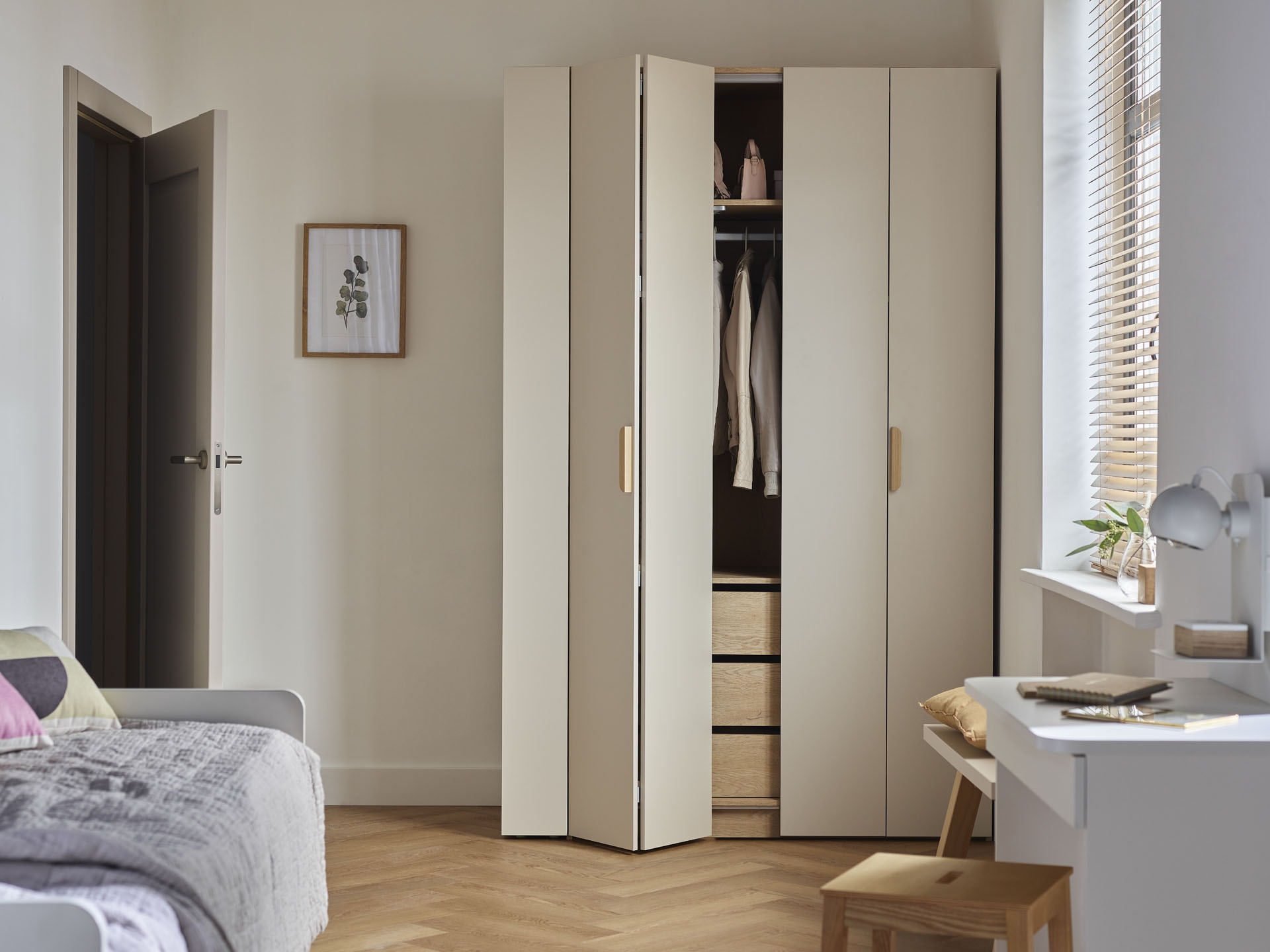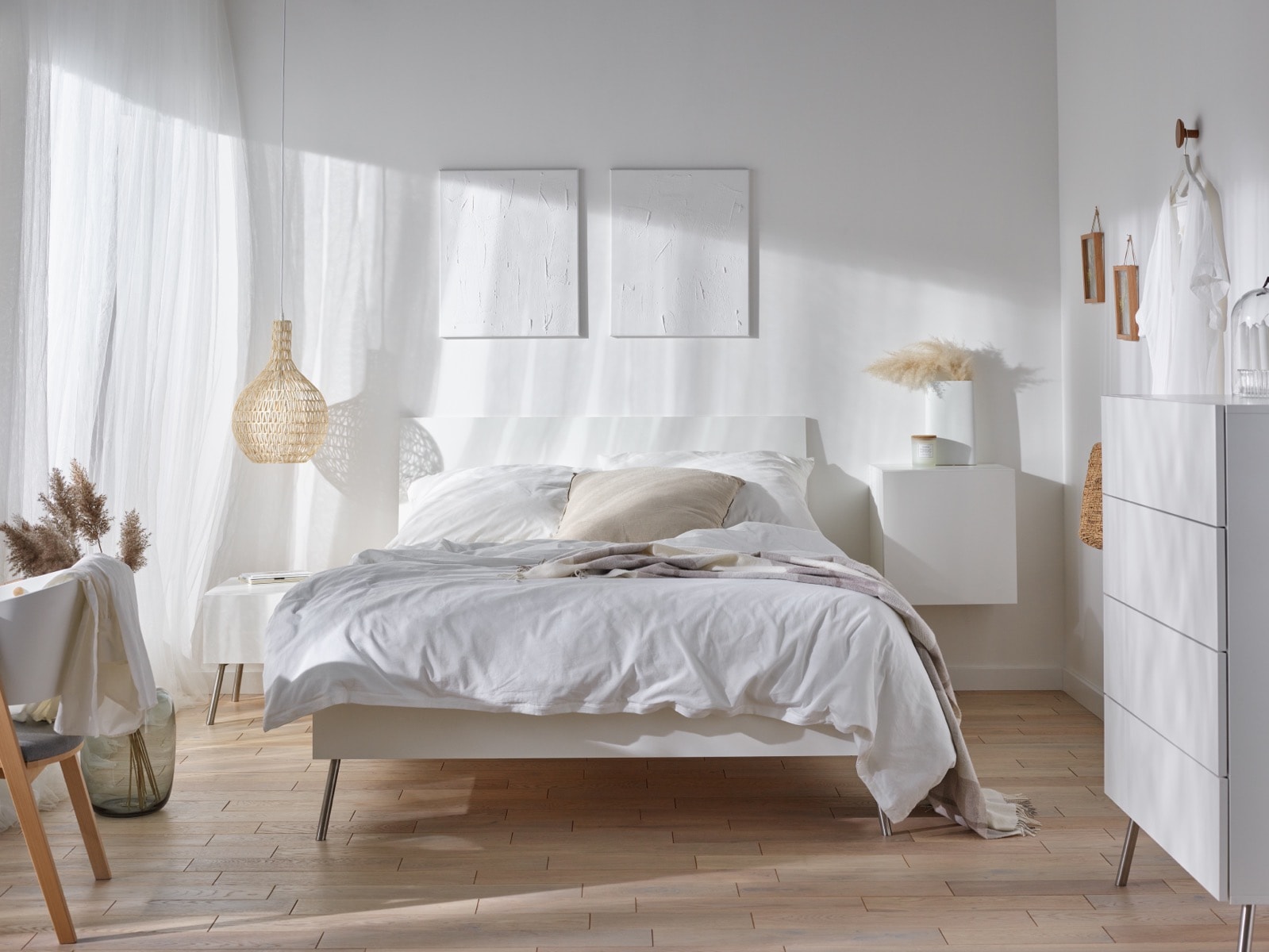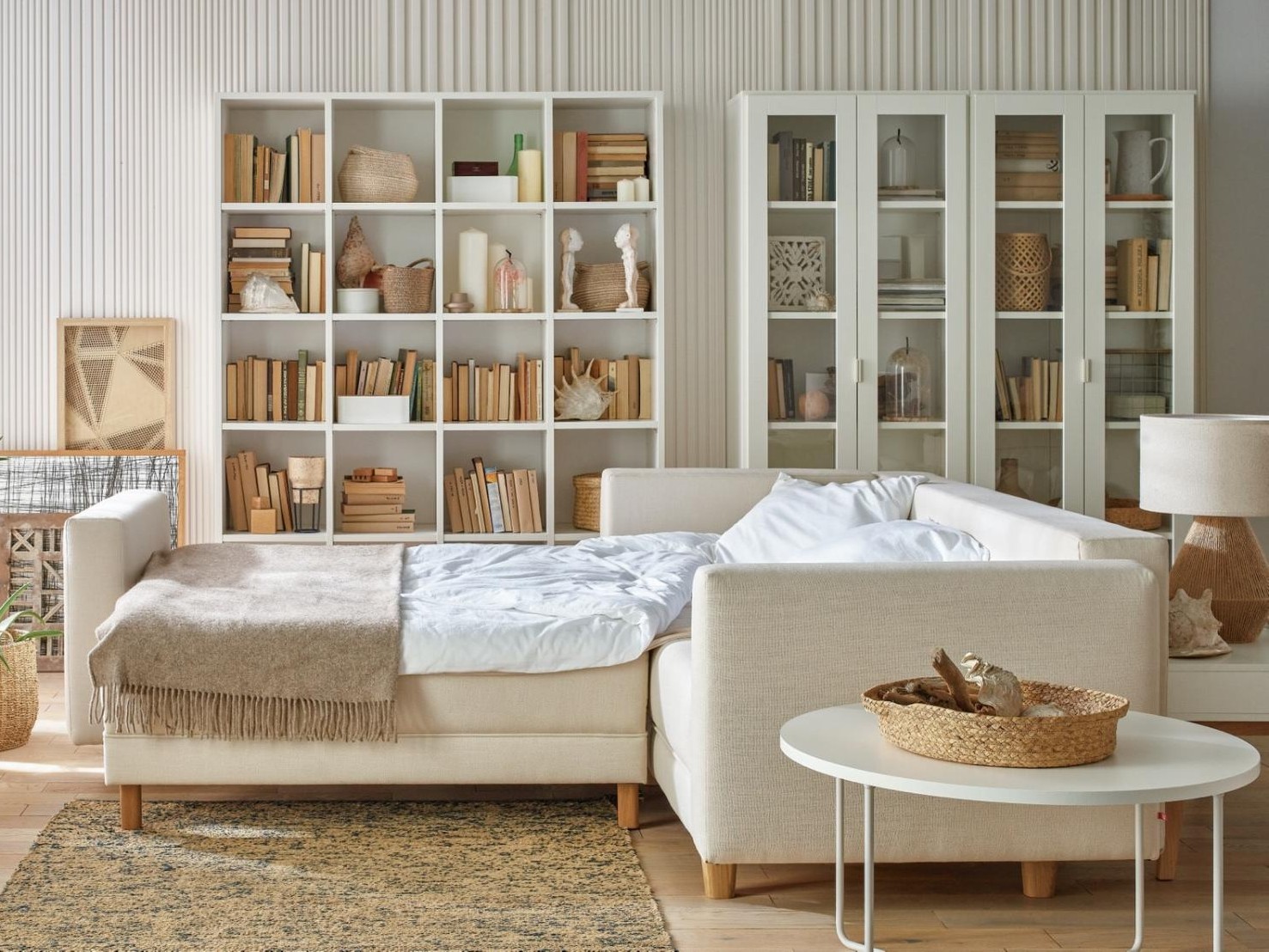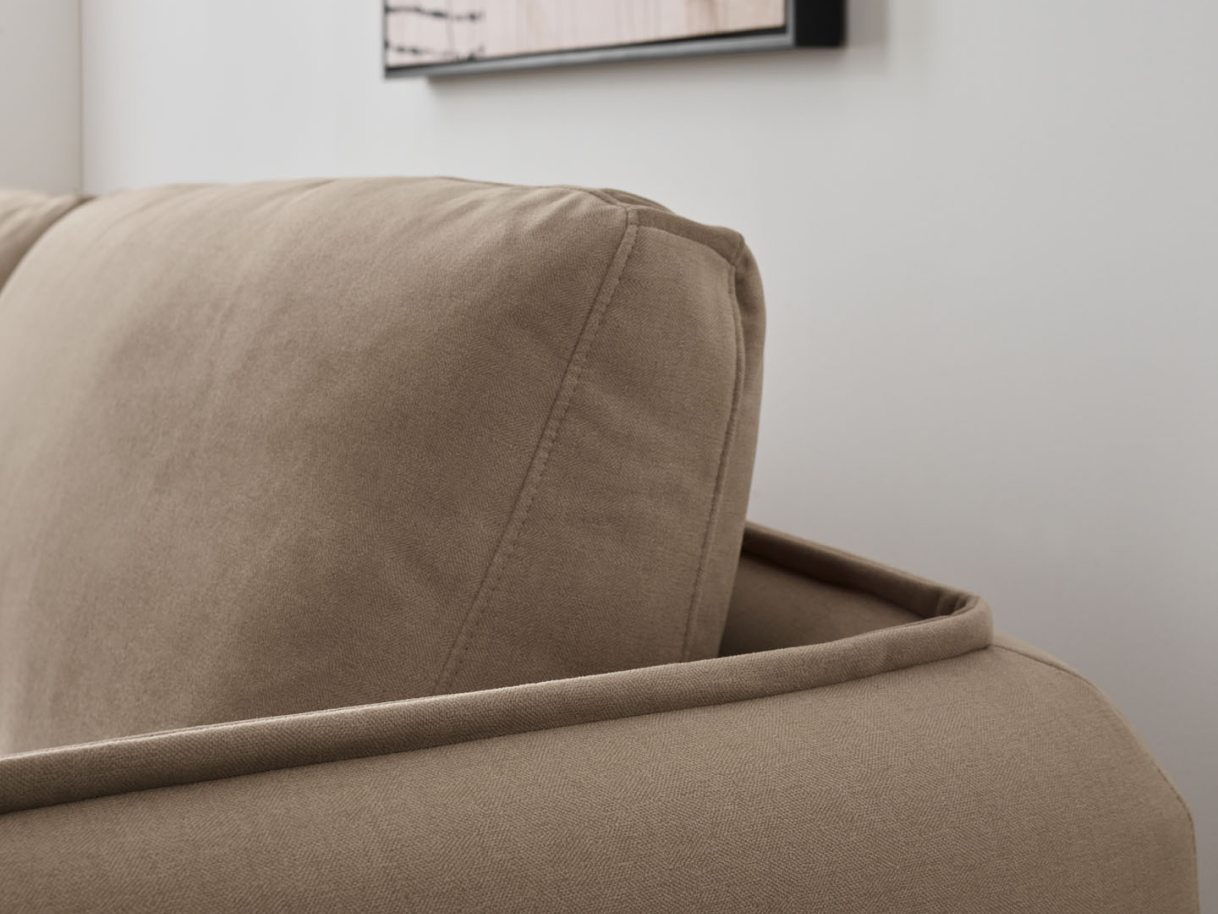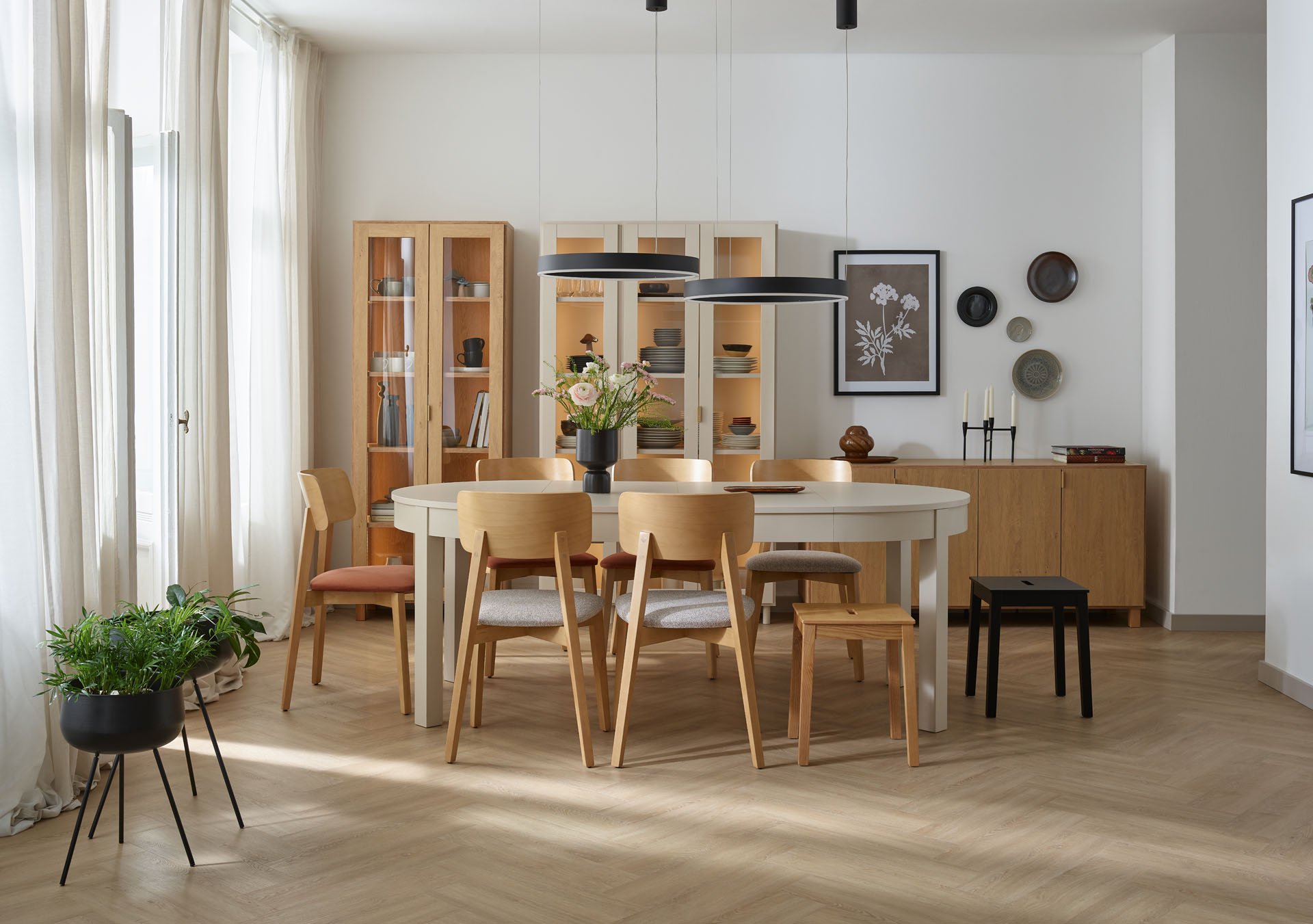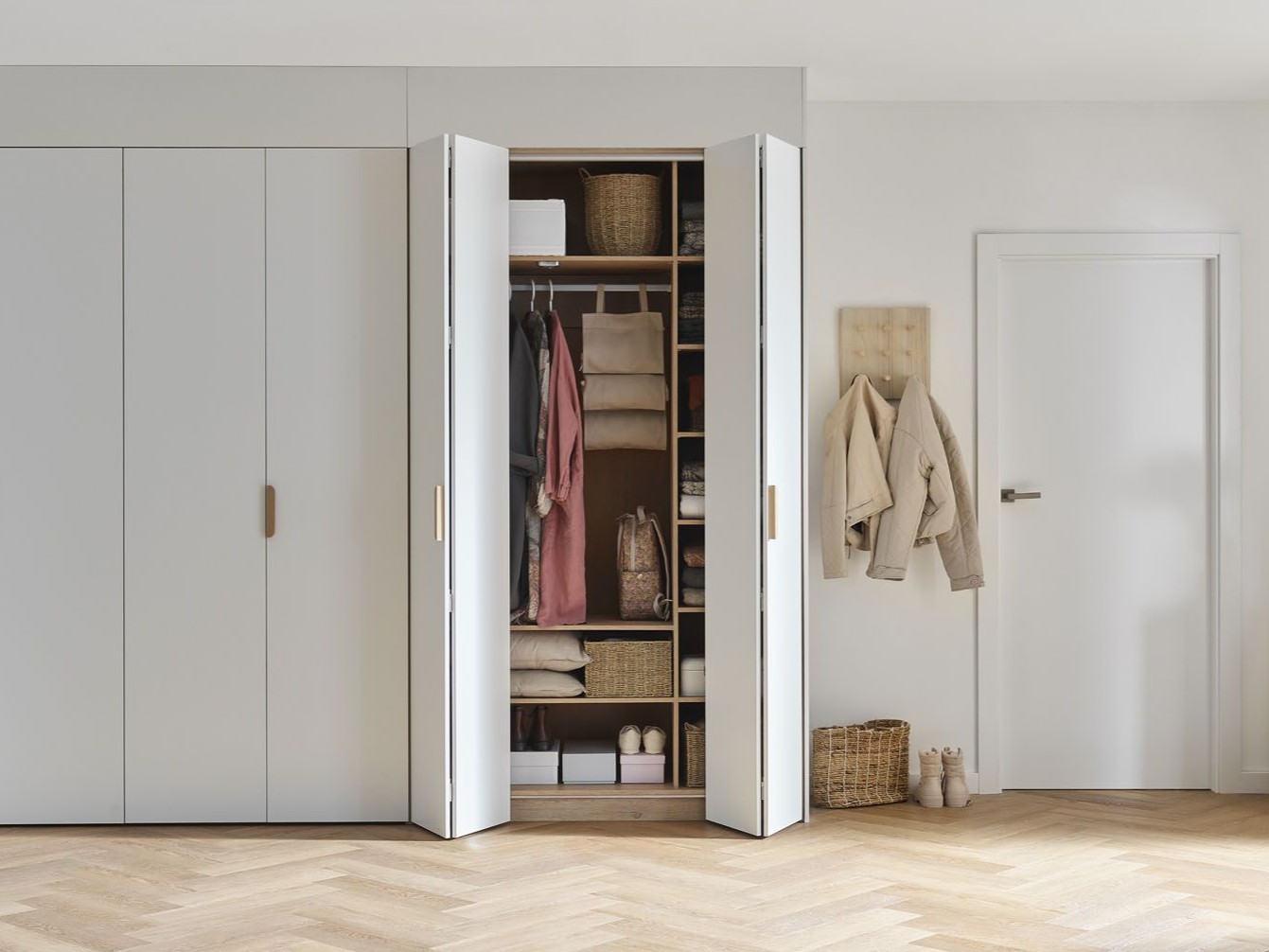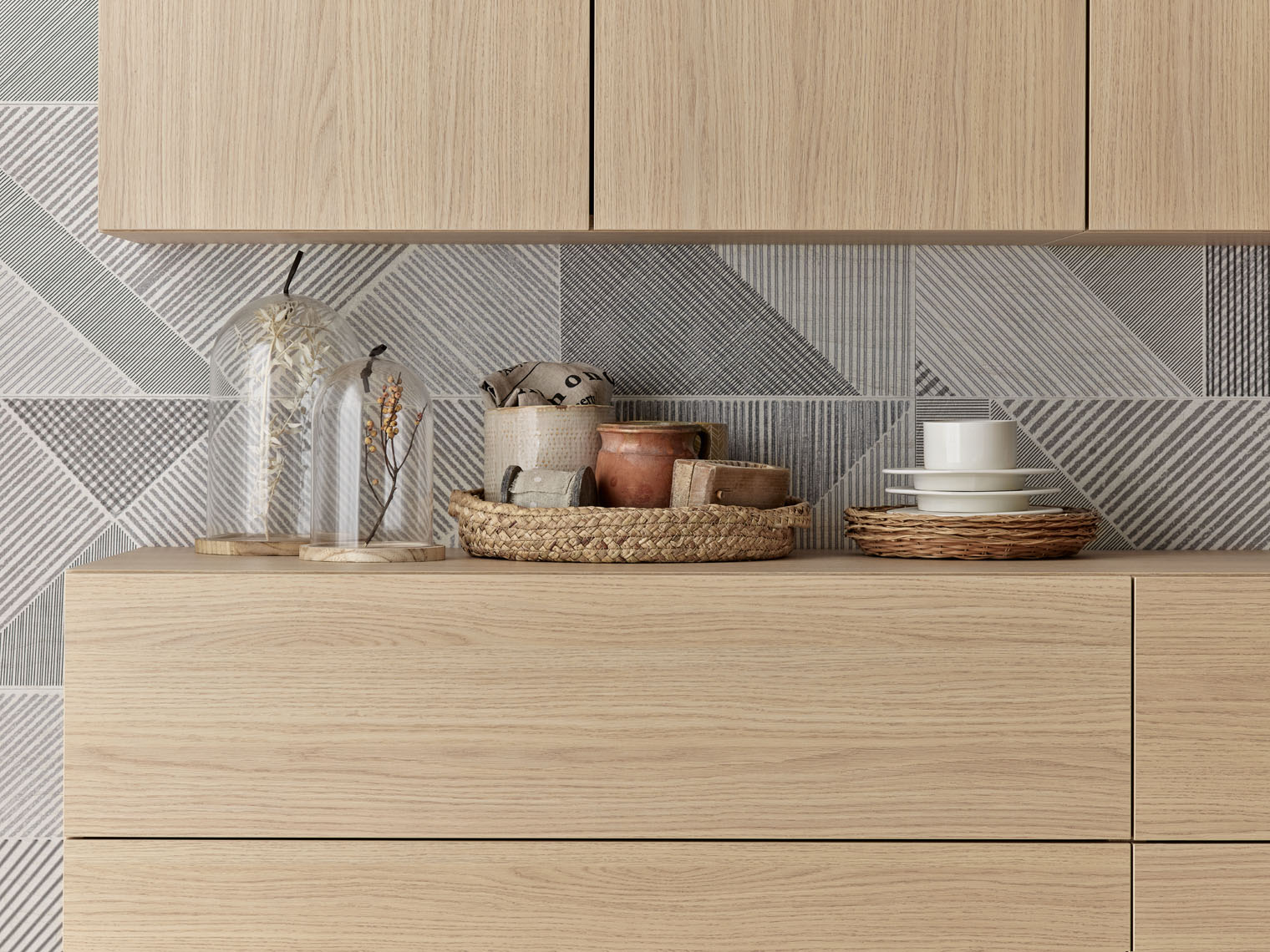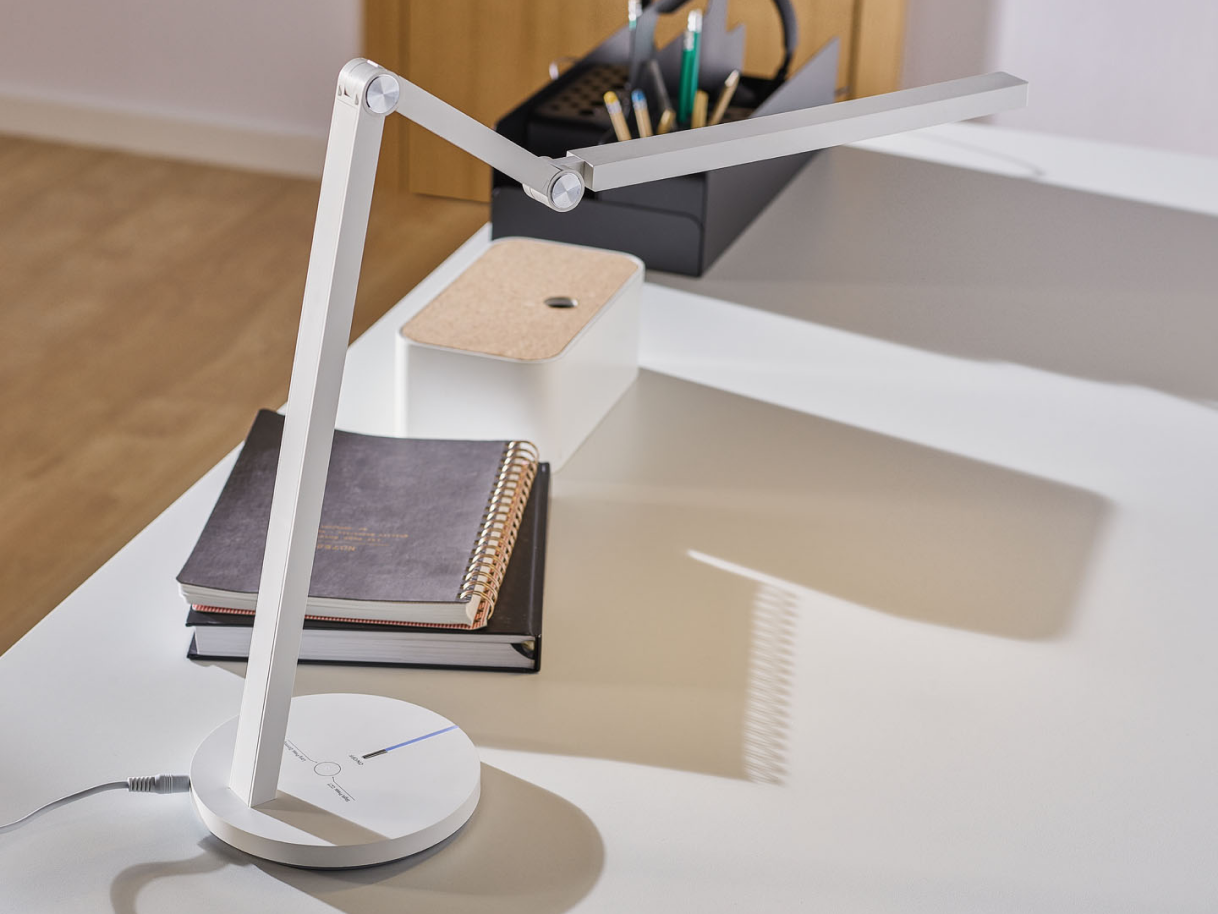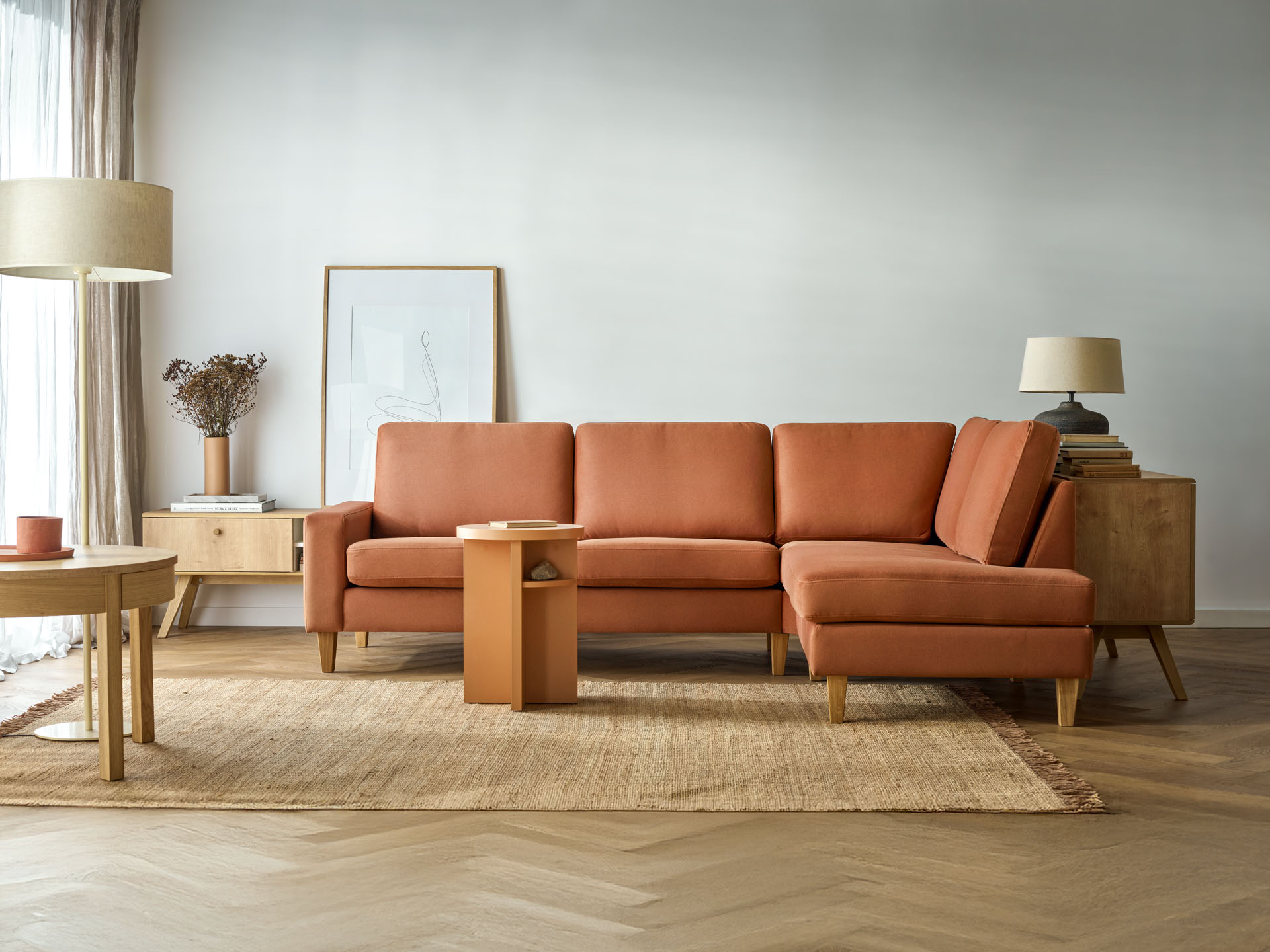Which floorboards
to choose for the kitchen and bathroom? waterproof or watertight
Although panels seem to be a non-standard solution for the kitchen or bathroom, they are an increasingly popular alternative to classic tiles. Thanks to their resistance to moisture and mechanical damage, such flooring is suitable for the most demanding rooms. We explain what distinguishes waterproof and water-resistant floors.
The flooring in our homes is subjected to numerous tests on a daily basis. At night, we test the quiet finish, trying not to awaken sleeping household members as we move about. When we accidentally knock over a glass of water in the morning, we have the opportunity to test the impermeable water repellent layer and the tightness of the locks. The carefree play of pets and children is also a test - the right abrasion and moisture resistance class will ensure that the floor passes the test. Similar experiments will be met by waterproof and water-resistant floors, which we have characterised below.
PANELLING IN THE KITCHEN AND BATHROOM - WHY IS IT WORTH IT?
Compared to laminate flooring, the choice of ceramic involves a significant financial outlay. The costs include not only the material itself, but also specialist adhesive and installation, which should be carried out by a professional. Finishing the floor with tiles requires due precision and calculations to achieve an even composition. Panels do not generate such problems - their installation is much easier. Each panel is fitted with convenient snap-fit joints, fitting together like a jigsaw puzzle, making the whole process very quick.
The floor panels also have the advantage of easy care, which includes regular vacuuming and washing with a product designed for them. The preparation is diluted with warm water according to the proportions specified on its packaging and then spread in a sweeping motion with a flat mop. For the sake of the condition of the panels, it is advisable to remove more serious dirt and sand, which may scratch the panels, straight away. You should also choose your hoover brush carefully - it should have a soft tip so as not to damage the surface.
WHAT SHOULD I CONSIDER WHEN CHOOSING FLOOR PANELS?
What floor panels we choose for the kitchen or bathroom depends not only on the tone of the arrangement, but also on the comfort of the household members. A stable, even surface will allow you to move freely between rooms, and additional insulation will ensure that your feet won't freeze despite the lack of footwear. Soft socks are then all that is needed to turn the floor into a comfortable place for children to play with a little creativity. Panels can be a fashion catwalk, a dance floor and witness to many important family events. They will work well for any of these activities if key parameters are taken into account when purchasing.
A WIDE RANGE OF DESIGN POSSIBILITIES
One of the first issues to address when looking for the right flooring is the choice of raw material. Laminate panels have a high-density HDF board inside for stability and surface strength. Vinyl panels, on the other hand, are made from polyvinyl chloride - a synthetic material that is particularly resistant to scratches and mechanical damage. Both laminate and vinyl panels are composed of several layers, including a decorative layer. Thanks to modern technology, their top can resemble the grain of real wood or the structure of a concrete floor.
When choosing a floor or vinyl laminate colour for your kitchen or bathroom, it is worth bearing in mind that it will influence the mood of the interior. It is good to keep in mind the future furnishings so that you can create a cohesive arrangement. A well-thought-out combination can make a room appear larger or cosier. A honey-coloured shade will warm up the white of the ceramic washbasin, while a dark shade will be the perfect contrast to the wooden pantry and will enliven the space. A shimmering finish will also introduce an element of dynamism, allowing the sun's rays to reflect off the floor surface. It doesn't have to be smooth: the clearly defined lines that you can feel under your fingertips are a great imitation of the texture of the natural material.
FUNCTIONALITY AND DURABILITY
The panels installed in the bathroom and the kitchen can differ. The degree of resistance to moisture and our daily use of the floor are important here. Different parameters will be useful if we happen to leave standing water for a longer period of time, and different if we remember to wipe the damp surface with a mop. However, the durability of the floor is influenced not only by the impermeable water repellent layer, but also by the abrasion class, appropriately selected for the conditions in the room.
Panels numbered 33, 32 and 23 or, according to a different classification, AC5 and AC4 will work best in kitchens and bathrooms. These symbols indicate the maximum traffic volume allowed by the surface. Those suitable for intensively used rooms provide the longest durability and are also more resistant. They are therefore characterised by significantly greater durability.
WATER-RESISTANT PANELS
Increased resistance to moisture comes in handy in rooms where different editions of water are encountered on a daily basis. Whether for relaxing baths or entertaining while cooking, the chosen floor panels for bathrooms and kitchens should ensure that they can be used intensively. Larger puddles or small drops will remain on their surface - they won't penetrate any deeper for 24 hours or even longer, so the panel won't swell.
Panels can be waterproof or water-resistant. The former protect the floor from absorbing moisture over a 24-hour period, thanks to the hydrophobic layer and the tightness of the locks. The latter, on the other hand, are made of a material that does not swell when it comes into contact with water. The impermeable zips are additionally treated with wax to prevent condensation from entering. So we can enjoy a relaxing shower without worrying about bulging surfaces. Direct contact with spilt water will not affect the performance of the floor, which is confirmed by the long-term guarantee. However, the panels cannot be installed in the shower itself.
The specific solution should be adapted to individual needs and the type of room. In some cases, a less resistant type of laminate will be fine, in others a more resistant one will do. In the kitchen, for example, a waterproof floor is usually sufficient. Even if you spill a little water while straining noodles, you don't have to rush to clean up - the reinforced top layer will protect the board from contact with moisture for up to 24 hours after the puddle has formed.
WHICH FLOOR PANELS TO CHOOSE FOR THE KITCHEN?
When you're cooking dinner or hurriedly preparing boxes of second breakfast, it's hard to expect that small drops won't fall on the floor. The floor should provide complete freedom when cooking. When choosing it, it is worth bearing in mind not only its resistance to moisture, but also to dirt, so that you will only be able to remove the tomato sauce when you get home from work.
Modern installation technology means that, in the kitchen as well as in other rooms, moisture is no longer a threat to the substrate. The surface of the Querra WR waterproof panels has been reinforced in such a way as to provide protection against an overturned dog bowl or the tip of a watering can that has missed the pot. A water repellent layer and ultra-tight locks ensure that these panels do not succumb to water around the clock. The structure of the floor with Water Resistance technology will remain unchanged for years. Its performance will be enhanced by the Espumo waterproof skirting boards, which can be painted so that they form a harmonious whole with the paint on the wall.
When choosing waterproof panels, it is also worth considering the high abrasion class, which prevents scratches and dents. A falling glass, animal claws and the hard heels of shoes can all have a negative impact on the texture of the floor. If you opt for a solution that is suitable for intensive use, the floor in the kitchen will please your eyes with its unchanged shine and texture for a long time. Querra WR panels are marked with a very high abrasion class of AC5, and the protective coating protects against chemicals and sunlight.
WHICH FLOOR PANELS FOR THE BATHROOM?
If you want to introduce floor panels into your bathroom, it's a good idea to make them waterproof. Around the bathtub, puddles often form, which could ruin plans for a relaxing bath. In the case of Rigio panels with a hard core with mineral fibre admixture, we are dealing with an extremely tight lock, allowing for complete relaxation in the hot water. Thanks to them, we are able to introduce a wooden theme in the shower area itself. Such a floor is also easy to clean and maintain.
A nice addition is the installation of underfloor heating, so it's worth choosing those panels that allow it. A warm floor, also achieved by a material that is not a cold tile, increases our comfort after getting out of a hot bath - also thanks to the R10 anti-slip class. A good solution is vinyl panels, which not only allow us to raise the temperature of the floor, but also to omit expansion joints. The result is a uniform, slat-free surface, which guarantees comfortable movement for children and people with disabilities. The acoustic layer muffles the sound of footsteps, bringing soothing silence into the flat.
WATERPROOF AND WATER-RESISTANT - PANELS THAT STAY WITH US FOR LONGER
Waterproof floor panels are not inferior to waterproof in both functionality and comfort. These are two types of flooring that will meet the different needs of householders. Although we are looking for a greater degree of protection from moisture in the bathroom, the kitchen or other rooms do not require as much protection. A lot also depends on our lifestyle. It is worth bearing in mind, however, that both these types of flooring have high aesthetic qualities and a wide range of colours and finishes.

